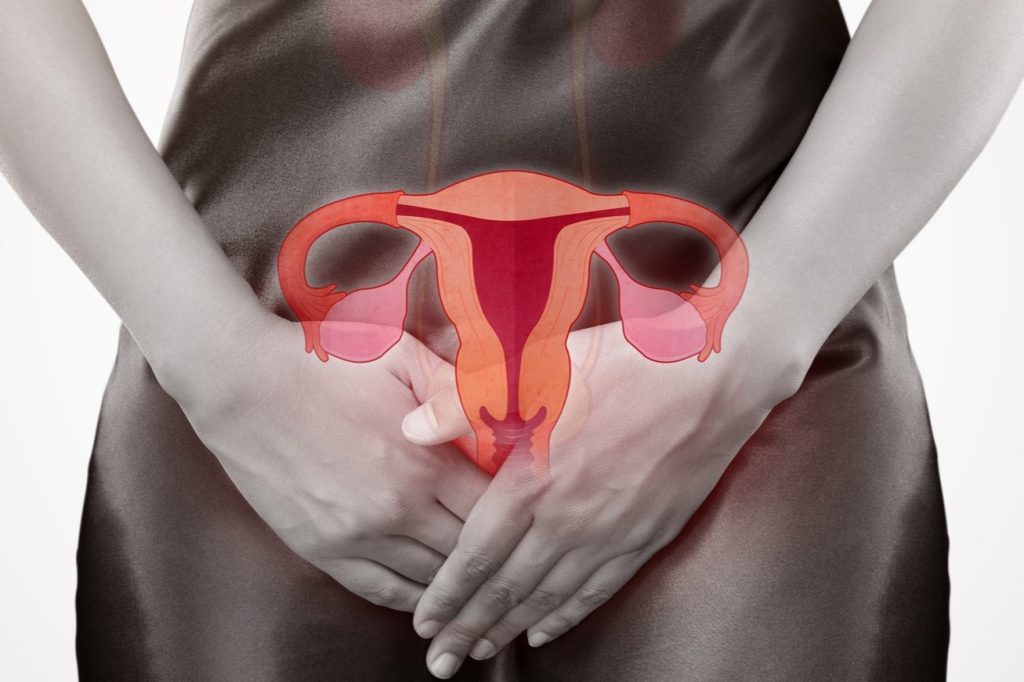
How to Fix a Tilted Uterus?
The uterus or womb of some women is tipped and points toward the lower back. This is referred to as a tilted, retroverted, or slanted uterus. Normally, a uterus sits upright, either in an up-and-down or vertical position. However, between 20% and 30% of women have a “tilted uterus”, which makes it quite common.
A lot of people worry that having a tipped uterus will make it harder for them to get pregnant but the fact is, it does not. If a person is having trouble getting pregnant, doctors may consider the possibility of a tilted uterus but only after other causes of infertility have been ruled out. In most cases, a tilted uterus does not affect labor or delivery.
However, a person with a tilted uterus may have trouble having painful sex. There are a few possible medical explanations for this discomfort:
- The cervix’s position in the vagina may be different if the uterus is tilted. Coitus may be painful when the penis rubs against such a cervix.
- It is possible for the ligaments that support a tilted uterus to stretch and move in a different direction than the uterus. During sex, this may cause pain or discomfort.
- Another possibility is that venous congestion in the pelvis, caused by a tilted uterus, can cause the reproductive organs to expand and become full of blood.
Now, when a woman goes through these painful scenarios, wondering how to fix a tilted uterus can never be out of her mind. Simply changing positions during sex may ease the pain caused by a tilted uterus. The partner must know what makes them feel at ease and what doesn’t.
Now, What Causes The Uterus to Tilt?
The uterus is an organ in the lower part of a woman’s pelvis that is hollow and pear-shaped. Here are a few possible causes of a tilted uterus:
-
Weak Pelvic Muscles
The uterine ligaments can become weakened or lax after menopause or childbirth. This can result in a tipped uterus.
-
Large Uterus
Tilting of the uterus can also be caused by pregnancy, fibroids, a tumor, or an enlarged uterus.
-
Adhesions or Scars in The Pelvis
Conditions like endometriosis, infection, or previous surgery can leave scars on the uterus or pelvis. The uterus may tip over or be pulled backward by this scar tissue.
-
Genetics
A tipped or tilted uterus may be present at birth in some women.
Differences Between Anteversion and Retroversion
Now there are two terms you must know when you seek how to fix a tilted uterus
- Anteversion
- Retroversion
An anteversion of the uterus indicates that the uterus is towards the front of the abdomen. This is a common position, and it does not affect a person’s ability to conceive.
The term “retroversion” refers to the uterus being tipped backward. Pregnant women may occasionally encounter difficulties as a result of this.
Symptoms a tilted Uterus
You must get yourself tested to find out which of these two you have before you figure out how to fix a tilted uterus. To ease your testing journey, let’s give you a rundown of the symptoms of a tilted uterus:
- Pain during sexual activity
- Severe cramping or pain during menstruation
- Back pain during sexual activity
- Recurrent urinary tract infections
- Discomfort while using tampons
If you suspect that you may be having any of the above symptoms, get yourself medically checked.
How is a Tilted Uterus Diagnosed?
A routine pelvic examination can easily identify a tilted uterus. On a typical pelvic examination, the doctor will
- Insert two fingers into your vagina
- Place the other hand on top of your abdomen
- Gently push the abdomen to catch your uterus with both hands
The doctor can feel the uterus for abnormal growth and determine its shape, size, and position. The doctor can perform diagnostic tests too to distinguish this condition from something more serious because these symptoms may be a sign of other, more serious conditions.
How to Fix a Tilted Uterus?
A tipped uterus is not considered a problem that requires treatment on its own. The root cause of a tipped uterus, such as fibroids or a lack of support, will typically be the focus of treatment. These options may be used if a person has severe symptoms that make it hard for them to live or get pregnant.
-
Pessary
It is a device that is inserted into the vagina to reposition the uterus and support the vaginal walls, uterus, and other pelvic structures. A pessary is only a temporary treatment as the uterus will return to its original position when removed.
-
Surgery
The outpatient procedure known as uterine suspension surgery can be performed with or without the use of a mesh or sling for long-lasting outcomes and pain relief during sex.
-
The “Knee-Chest” Posture
Bring your knees up to your chest while lying down. It can help move the uterus into a more comfortable position temporarily. Remember that it is not a permanent fix.
A Final Word
Even if a person suspects that they are experiencing discomfort as a result of a tilted uterus, it is still essential for them to consult a physician whenever they experience pain during sex or any other symptom. The three methods of how to fix a tilted uterus mentioned above are to be done only after consultation.
FAQs
- How can I naturally fix a tilted uterus?
Lay on your back with your feet flat on the ground and your knees bent. Slowly raise one knee at a time up to your chest with the help of both your hands. The muscles in the pelvic floor are strengthened by these pelvic contraction exercises.
- Can a tilted uterus go back to normal?
During pregnancy, the uterus may tip over if the ligaments that keep it in place stretch or lose tension. After giving birth, the uterus typically returns to its forward position. Treatment options like pessary, surgery, or exercises can also help a tilted uterus to get back to normal.
- What causes a woman’s uterus to tilt?
Some women have a tilted uterus by birth. The uterus can also change its position when the ligaments supporting it stretches during pregnancy. Scar tissue from a previous surgery or injury can pull on the uterus and change its orientation.


























